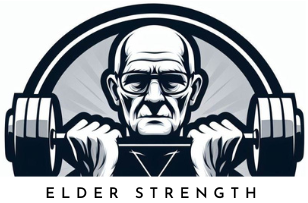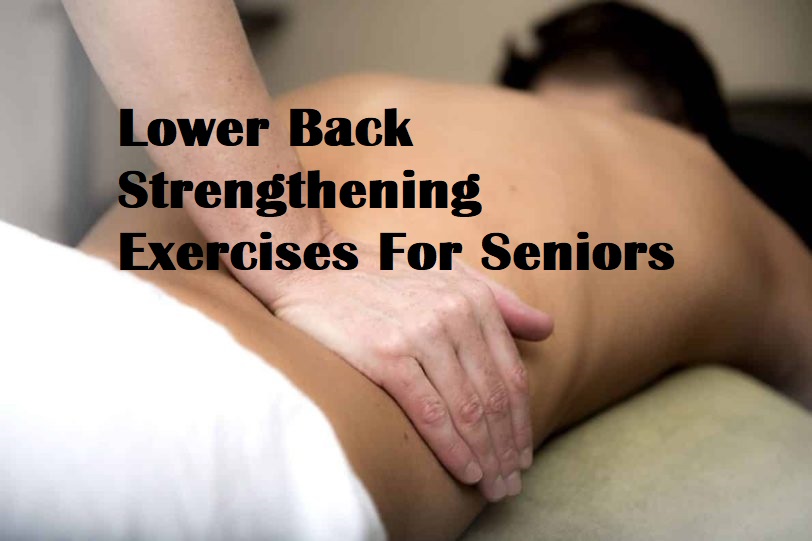In this post, you will learn about the importance of lower back strength and 3 simple lower back strengthening exercises for seniors.
Lower back pain is one of the most common ailments in seniors and most adults suffer from it at some point in their life. Lower back pain can vary from mild to excruciating.
A bit annoyingly, the amount of pain doesn’t always go with the severity of the injury. Sometimes a simple sprain can cause excruciating pain. While a fully herniated intervertebral disc with other severe symptoms like incontinence and loss of feeling can be almost pain-free.
There is a general rule to back pain that the closer it is to the spine, the better, no matter how bad the pain is. If the pain radiates to the legs or buttocks, it’s likely a bulge compressing the sciatic nerve.
Always Get A Diagnosis First
If you are suffering from acute back pain, it’s very important to get it assessed by a doctor. And following their advice do everything in your power to alleviate the pain as soon as possible. This is because lower back pain has a nasty habit of turning into chronic pain.
It’s also important to get a proper diagnosis because some back conditions can get worse with the wrong kind of exercise. Some back conditions can also require immediate surgery or medication to prevent deterioration.
Painkillers can be used to numb the initial pain, but exercise is usually the number one treatment if the pain isn’t severe or there are no neural symptoms. It’s easy to get hooked on painkillers and just rest, but this is often the worst thing you can do. If you can’t do anything else, usually walking is enough to start to alleviate the pain.
These are just common generalizations so be sure to get a proper diagnosis before attempting to treat lower back pain with back-strengthening exercises.
Having strong back muscles can prevent back pain and protect you from injury. But there’s more to back pain than just back muscles. The back is an extremely tough biological mechanism when used correctly. When it’s used incorrectly, however, it can get injured easily.
So besides having strong back muscles it’s important to learn how to use your back and its surrounding muscles correctly. And that’s just what we are going to do today!
Let’s start by talking about the anatomy of the lower back a bit.
Your Back Is Strong But Complex
The lower back is one of the most complex parts of the human musculoskeletal system. When you look at the lower back of a skeleton, all you see is the spine. While on a living person there is a whole thick trunk.
This means there is a whole bunch of muscle, ligaments, tendons, and other connective tissues there. Since our nervous system originates from the spine, there are a lot of nerves in the area as well.
While the anatomy is complex, the back has to be extremely strong. Because it has to support the weight of our whole upper body. Even when running and jumping. Our back also transfers the force between our legs and arms when we lift something heavy.
This is why the spine and the muscles surrounding it have adapted to withstand great forces. For this to happen, they need to function correctly. The spine consists of vertebrae and intervertebral discs. At the back of the spine are bony protrusions known as facet joints.
When the spine is straight, or neutral, the facet joints stack up perfectly and transfer some of the force. The discs will also be evenly loaded and they will transfer force optimally and safely.
When the spine is twisted in any direction, the face joints won’t provide as much support and the force on the discs will be uneven. This can cause the disks to compress and rupture. Causing a herniation that can pinch the nerves originating from the spine.
The muscle surrounding the spine are multilayered. There are several smaller back muscles that connect to the lower back. For the sake of simplicity, you can think about the back muscles as the long muscles that extend your back.
The other important muscle group for supporting the lower back are the glutes and the abdominals. They offer support to the spine when contracted and braced.
Causes of lower back pain in the elderly
One of the most common causes of lower back pain is a dysfunction of the hips. When you don’t use your hips correctly, your legs and lower back have to compensate in a way they’re not meant to.
If you don’t know how to actively hinge your hips to activate the glutes and hamstrings, you will bend from your lower back, rounding your back and from the knees when you lift anything. This can put a strain on the discs and muscles there.
The large muscles of the hips (glutes and hamstrings) should do the majority of the lifting with correct bio mechanics. The large leg muscles (quads) can assist when you bend the knees, but your lower back should never round while lifting something heavy. It should remain neutral and supported by your core musculature.
Unfortunately, many people have never learned the correct motor patterns for activating their hips. Or they have long forgotten them. Even babies know how to bend their hips when learning to stand and walk. But if you don’t keep using that motor pattern, you can lose it.
Other common sources of lower back pain in seniors include osteoarthritis and spinal stenosis, which is caused by age-related compression and degradation of the discs and the spinal canal.
How to fix lower back pain in seniors
So how do we fix lower back pain? First, you need to know if there is a significant injury causing it. This means a trip to your doctor and likely an MRI to determine if you have a bulged disc or some other form of injury, osteoarthritis, or spinal stenosis.
Taking into consideration your doctor’s orders, the next step should be to look at what caused the lower back pain in the first place and fix the issue step-by-step, one piece at a time.
For most muscle-based lower back pain these four, seemingly simple steps will alleviate the condition significantly in most cases:
- Strengthen the lower back and core muscles, learn how to activate them as well (bracing)
- Learn how to activate the hips
- Never bend your spine while lifting something, use your hips and legs
- Assume exercise and activity as soon as the pain allows you to move
While these steps might seem simple enough, it’s easier said than done. Learning the proper biomechanics for lifting things and remembering to use them every time can be a bit challenging at an older age.
That’s why you should do these simple exercises until the motor patterns are ingrained in your nervous system. These movements will strengthen both your back and the muscles that are going to save your back.
1. Romanian deadlift (hip hinge)
For learning to activate your hips through the hip hinge movement pattern, there is no better movement than Romanian deadlift (RDL for short). In the RDL you will be holding a weight – usually, a barbell but a kettlebell or a dumbbell can be used as well – in your hands while standing up.
The movement starts simply by moving your hips back. You will then keep pushing your butt back and only bent your knees very slightly to maintain a vertical shin angle.
You keep bending from the hips until you feel a good stretch in your hamstring, usually around the time when the weight passes your knees. You then reverse the movement by pushing your hips forward. So the exercise is more of a hips back and forwards than up and down movement. Only the weight moves up and down, your hips stay at the same height except for the first part of the movement.
This is the most important part: During the whole movement, your back remains perfectly neutral with your abdominal actively bracing your core. If you round your back, the movement is done incorrectly. Some people tend to succeed with this exercise better if they overextend their back just slightly. It’s best if you can keep a neutral back but a slight extension is fine if you don’t overdo it.
The Romanian deadlift will strengthen your back as well and teaches you the proper way to use your back while lifting heavy objects.
You can learn more about the exercise in the article Deadlift For Seniors.
2. Back extension
Back extension is a simple exercise you can do at home or at the gym to strengthen the back extensors. It’s done by lying on your stomach and then arching your back by activating the muscles. It’s good to hold the contraction for a second.
Back extension are good for learning proper muscle activation of the back as well as rehabilitating from back pain. They are not great for building actual back strength because you can’t really add resistance. Also, like we talked about before, the back works best when loaded isometrically, meaning it just holds the load and transfers force instead of actively trying to move it.
Here’s a great example of the exercise by LIVESTRONG.COM (YouTbe embed. Content not created or owned by ElderStrength.com):
3. Plank
The plank is an isometric exercise that teaches you the correct way to activate your core, abdominal and back muscles. The way you perform a plank correctly is the exact same way you activate your midsection during lifting something heavy.
In the plank, you will lie on your elbows and toes while keeping your hips and back flexed as straight as possible. Gravity will pull your hips toward the ground so this is surprisingly hard.
You can learn how to perform the plank with tips in the article Planks For Seniors.
The plank is a great core and back exercise for seniors because it helps to build core strength without spine movement. If you have a bad back, flexing and extending the spine can often aggravate it. So the plank is a great exercise if back extensions and hip hinges are too uncomfortable.
If you have trouble supporting your weight with your elbows an even easier core exercise is the crunch. You can learn more about it in the article Sit-Ups For Seniors. They are not a back exercise but they help you build core strength quite effectively.
Conclusion
I hope you found these back-strengthening exercises for seniors useful and will try them yourself. If you have any questions, please leave them in the comments section below and I promise to get back to you.
Back strength is very important for a healthy, pain-free lower back. Even more important is to learn how to use your back, hips, and legs correctly to avoid getting injuries in the first place.
A healthy back truly is something you won’t appreciate until you get back pain. A bad back is a real nuisance and you should do your best to avoid it at any cost.
If you enjoy reading about strength training tips for seniors, please subscribe to our newsletter and bookmark our site.
See you next time!
Elder Strength

